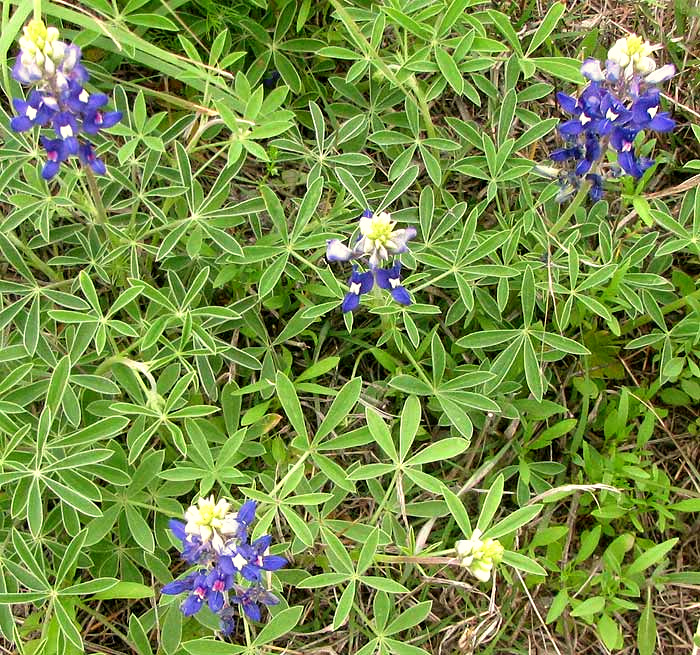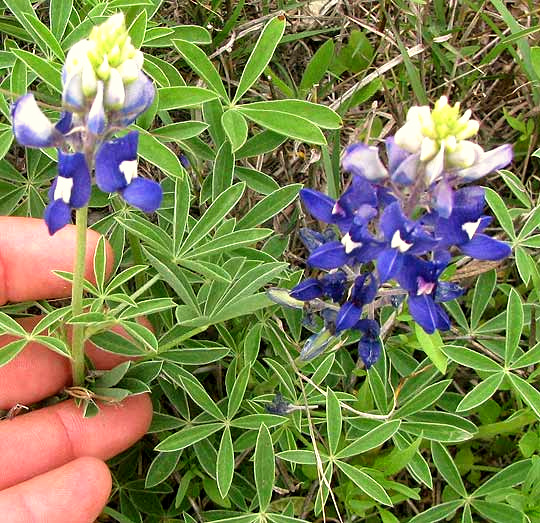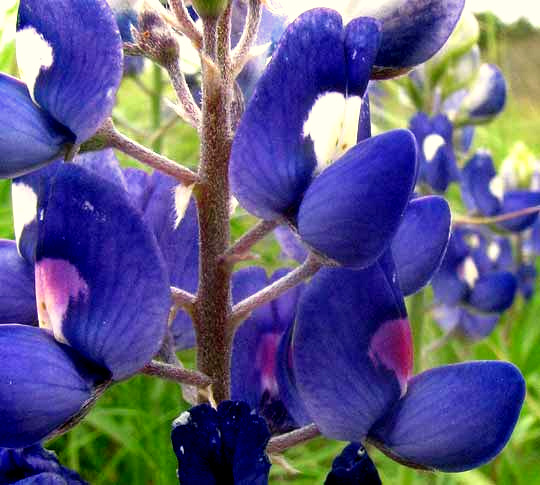Excerpts from Jim Conrad's
Naturalist Newsletter

from the March 30, 2014 Newsletter issued from the Frio Canyon Nature Education Center in the valley of the Dry Frio River in northern Uvalde County, southwestern Texas, on the southern border of the Edwards Plateau; elevation ~1750m (~5750 ft); N29.62°, W99.86°; USA
TEXAS BLUEBONNETS
Thanks largely to the efforts of Lady Bird Johnson and her love of wildflowers, certain larger Texas highways are justly famed for the gorgeous displays of spring wildflowers along their sides. On smaller roads the usual policies of mowing and herbicide use produce the usual grass deserts.
Maybe the most cherished of Texas's roadside wildflowers is the Texas Bluebonnet, LUPINUS TEXENSIS, which is a lupine and a member of the vast Bean Family. Last year I didn't see a single Texas Bluebonnet, though I'm told that sometimes here their flowers turn large fields completely blue. At our spot on the upper Dry Frio it was too dry for them last year, people said. Since this year our area is much drier than last year, I figured another year would pass without my seeing a Texas Bluebonnet.
However, Monday when I biked the 35 miles from Uvalde to Juniper House, in several low spots in ditches along US 83 a few Texas Bluebonnets finally turned up. You can see part of a bathtub-size colony at the top of this page. Most bluebonnet species I've met were much larger than these. You can judge their size with my hand for scale below:

In that picture, notice that the flowering racemes' tops consist of immature, white flowers crammed close together, giving the racemes distinct "white tops." This is an important field mark to distinguish the Texas Bluebonnet from certain other species, especially the Sandyland Bluebonnet, Lupinus subcarnosus, which otherwise is similar and also produces vast displays of blueness, and which occurs in southeastern Texas, not quite reaching this far west. Racemes of the Sandyland Bluebonnet may produce one or two small white flowers at their tops, but nothing compared to the large white zone of several immature flowers seen on Texas Bluebonnets.
A close-up of some Texas Bluebonnet blossoms appears below:

Notice that the upper flowers have white centers but the lower ones have purplish centers. To an insect's eyes, the flowers with purplish centers look all dark and uninviting, while the upper, more newly opened flowers with their white centers brightly attract pollinators exactly to their nectar zone. Once the flowers with white centers are pollinated, the white spots turn purplish, causing pollinators to stop visiting them and start paying attention to more newly opened, white-centered flowers above them, needing to be pollinated.
The Texas Bluebonnet, also called Texas Lupine, Buffalo Clover and Wolf-flower, is planted extensively along roadsides in Texas and Oklahoma, and is one of six lupine species designated as "the" state flower of Texas. Texas Bluebonnets occur in most of southern and central Texas, parts of Louisiana, and are planted in Oklahoma. They also grow wild in arid northeastern Mexico.